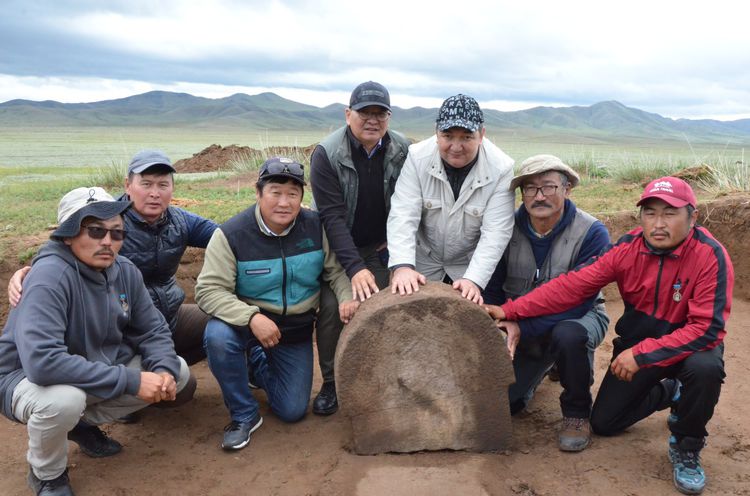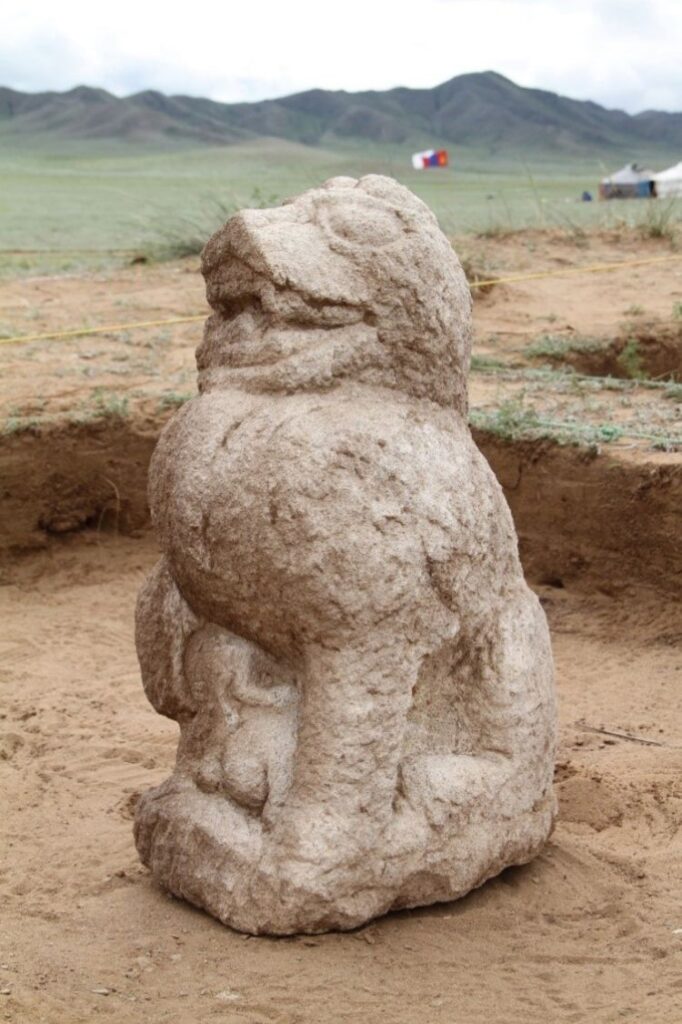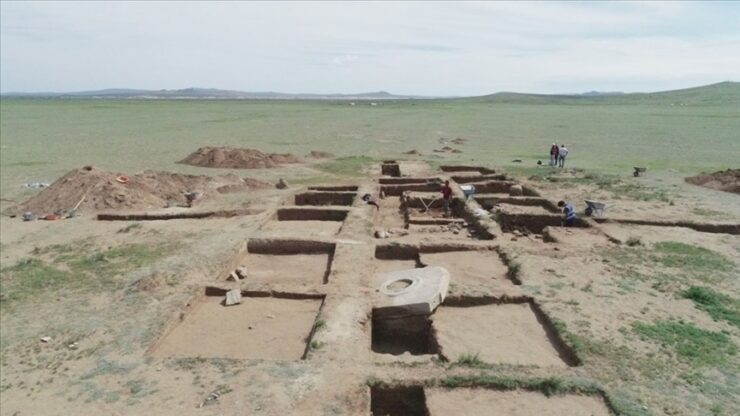As a result of scientific excavations carried out in cooperation with the International Turkish Academy and the Archeology Institute of the Mongolian Academy of Sciences, the complex and the inscription of İlteriş Kagan, the father of Bilge Kağan and Kül Tigin, were discovered in the Ötüken region of Mongolia.
Speaking at a press conference on the subject in Mongolia’s capital, Ulan Bator, International Turkish Academy President Darhan Kıdırali said that the excavations they started jointly with the experts of the Archeology Institute of Mongolia in the Nomgon plain in the Ötüken region in 2019 concluded successfully.
As a result of the excavations, Kıdırali about İlteriş Kağan’s complex and inscription, “Based on the information obtained from the monument text, it was concluded that the Nomgon complex was dedicated to Kul Tigin and Bilge Kağan’s father, İlteriş Kutluk Kağan, who revived the Göktürk Khanate. It is accepted as the oldest written monument of the Gokturk period, where the name ‘Türk’ was mentioned for the first time.”



According to AA‘s report, Ilteriş Kagan inscription contains 12 lines of old Turkish script. Kidirali stated that the complex, which was built in an oval shape from west to east, consists of a total area of 49 square meters. “A ditch was dug around the complex and a castle was built by piling up soil from here. On the west side of the complex, in the middle of the area, there is a perforated stone jar (altar), stone human figures, a lion statue with two cubs, and two sheep statues.”
In addition, 51 balbal stones were placed in order at the door of the complex. And remains of bricks proving that there was a place of worship inside the complex and a clay pavement laid on the pathway were also found.
Kıdırali “The upper part of the inscription and its turtle-shaped foundation were discovered in front of the place of worship. There are 12 lines of old Turkish script on both sides of the work found, and the old Sogdian script on the third side. Scientists participating in the discovery identified a number of words from the text of the monument, such as ‘God’, ‘Turk’, ‘Kutluk’, ‘Tyumen’.” said.



“The İlteriş Kağan monument is an important monument for the Göktürk state like the Orhun monument”
Ilteriş Kagan’s Nomgon complex generally resembles the monuments of his sons Bilge Kagan and Kul Tigin. Stating that two wolf heads in the form of a dragon are symbolized on the upper side of the Ilteriş Kagan inscription in Nomgon, Kıdırali said, “It is known that a dragon-shaped wolf-headed figure, which is the symbol of such khanate, was drawn on the top of Taspar Kagan, Bilge Kagan, Kul Tigin and other monuments. It is understood that the Nomgon monument is an important monument for the Gokturk state, like the Orkhon monuments.” Said
Kıdırali stated that as the International Turkish Academy, they will prepare a scientific book on the results of the Nomgon excavations and that they plan to promote it in the capitals of all Turkish states, “Excavations of Gokturk period monuments in Mongolia will continue in the future.” he said.

This was sn excellent sharing of news Thank ypo
The tomb complex of Bilge Kagan and Kultigin’s father, İlteriş Kagan, was found in Mongolia
By Elif Duluk on Thursday, August 25, 2022